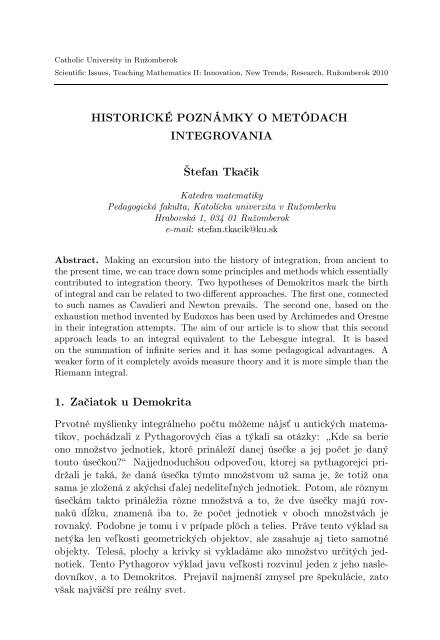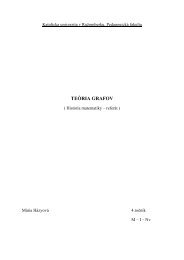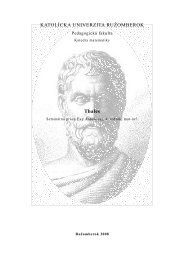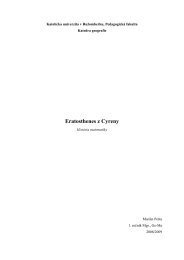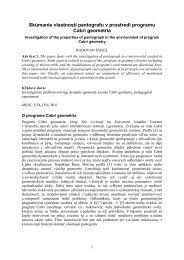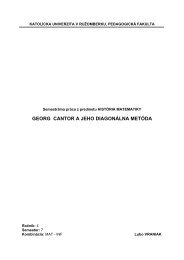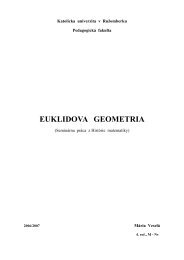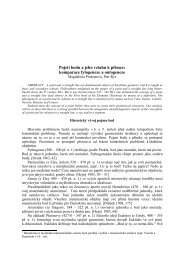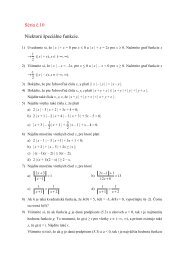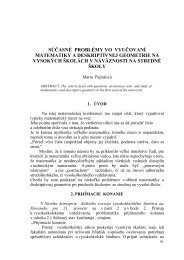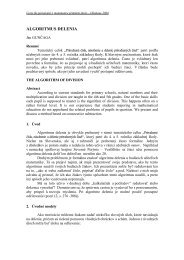Katedra matematiky - Katolícka univerzita v Ružomberku
Katedra matematiky - Katolícka univerzita v Ružomberku
Katedra matematiky - Katolícka univerzita v Ružomberku
- No tags were found...
Create successful ePaper yourself
Turn your PDF publications into a flip-book with our unique Google optimized e-Paper software.
Catholic University in RužomberokScientific Issues, Teaching Mathematics II: Innovation, New Trends, Research, Ružomberok 2010HISTORICKÉ POZNÁMKY O METÓDACHINTEGROVANIAŠtefan Tkačik<strong>Katedra</strong> <strong>matematiky</strong>Pedagogická fakulta, <strong>Katolícka</strong> <strong>univerzita</strong> v <strong>Ružomberku</strong>Hrabovská 1, 034 01 Ružomberoke-mail: stefan.tkacik@ku.skAbstract. Making an excursion into the history of integration, from ancient tothe present time, we can trace down some principles and methods which essentiallycontributed to integration theory. Two hypotheses of Demokritos mark the birthof integral and can be related to two different approaches. The first one, connectedto such names as Cavalieri and Newton prevails. The second one, based on theexhaustion method invented by Eudoxos has been used by Archimedes and Oresmein their integration attempts. The aim of our article is to show that this secondapproach leads to an integral equivalent to the Lebesgue integral. It is basedon the summation of infinite series and it has some pedagogical advantages. Aweaker form of it completely avoids measure theory and it is more simple than theRiemann integral.1. Začiatok u DemokritaPrvotné myšlienky integrálneho počtu môžeme nájsť u antických matematikov,pochádzali z Pythagorových čias a týkali sa otázky: „Kde sa berieono množstvo jednotiek, ktoré prináleží danej úsečke a jej počet je danýtouto úsečkou?“ Najjednoduchšou odpoveďou, ktorej sa pythagorejci pridržalije taká, že daná úsečka týmto množstvom už sama je, že totiž onasama je zložená z akýchsi ďalej nedeliteľných jednotiek. Potom, ale rôznymúsečkám takto prináležia rôzne množstvá a to, že dve úsečky majú rovnakúdĺžku, znamená iba to, že počet jednotiek v oboch množstvách jerovnaký. Podobne je tomu i v prípade plôch a telies. Práve tento výklad sanetýka len veľkosti geometrických objektov, ale zasahuje aj tieto samotnéobjekty. Telesá, plochy a krivky si vykladáme ako množstvo určitých jednotiek.Tento Pythagorov výklad javu veľkosti rozvinul jeden z jeho nasledovníkov,a to Demokritos. Prejavil najmenší zmysel pre špekulácie, zatovšak najväčší pre reálny svet.


